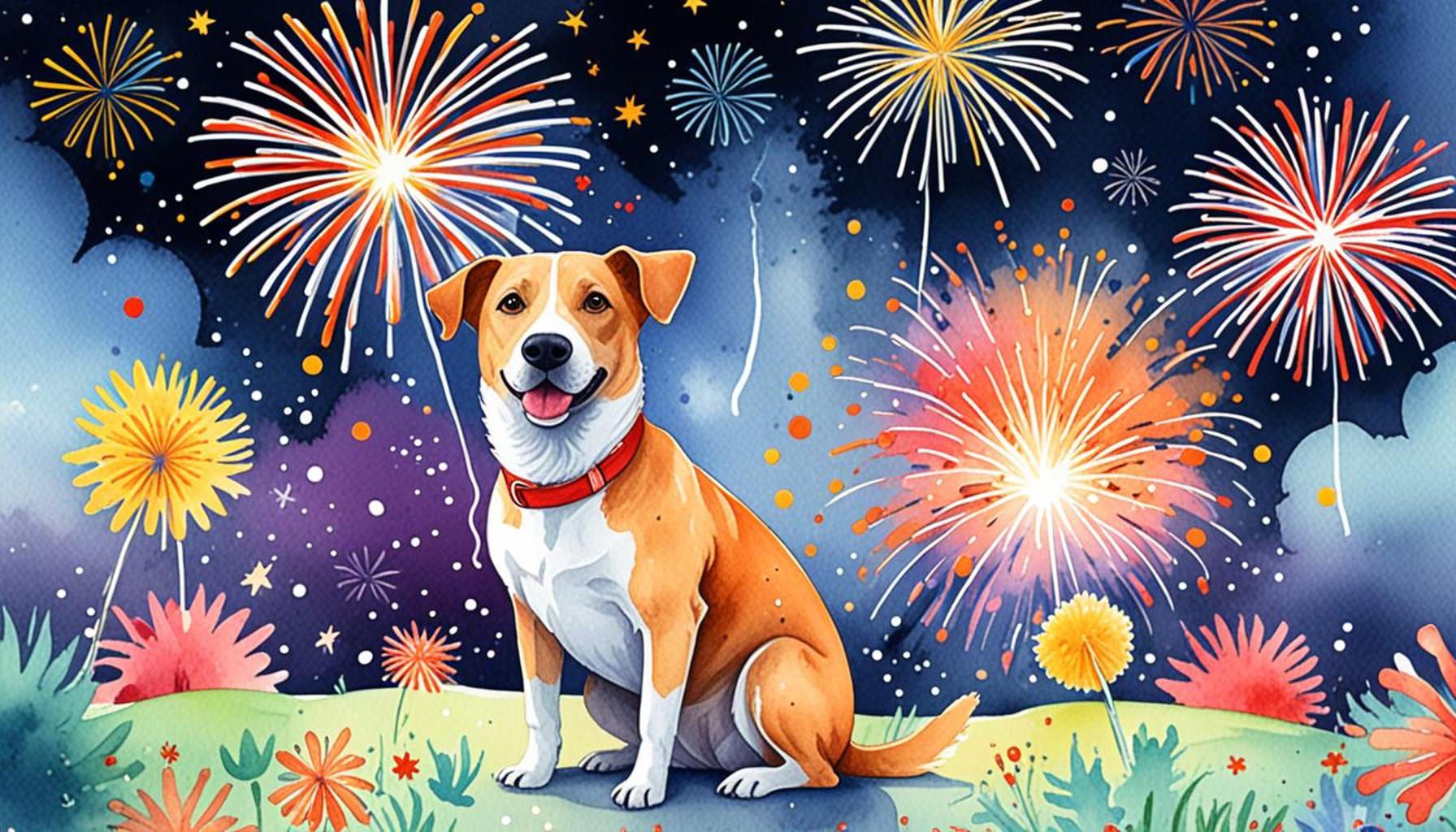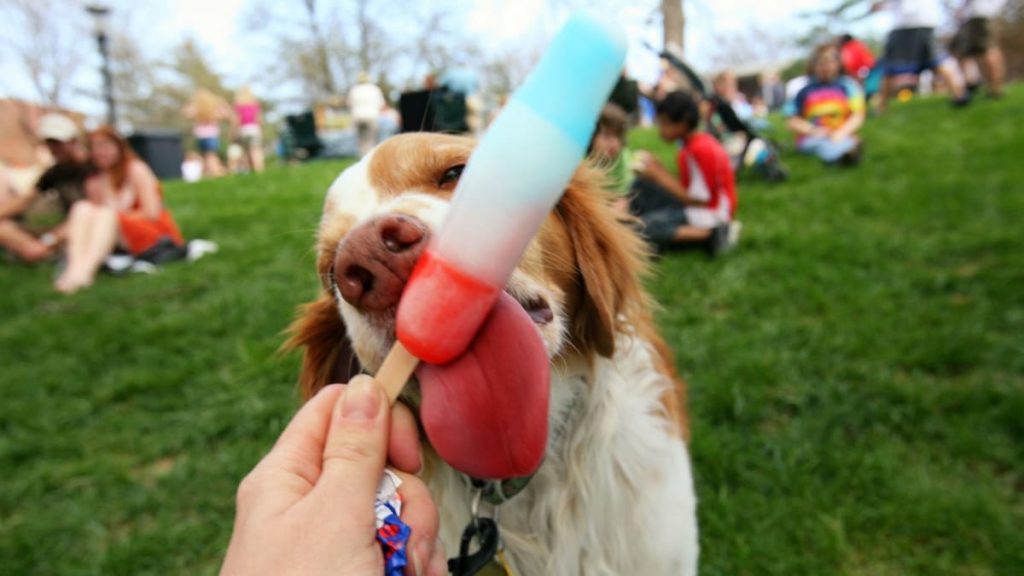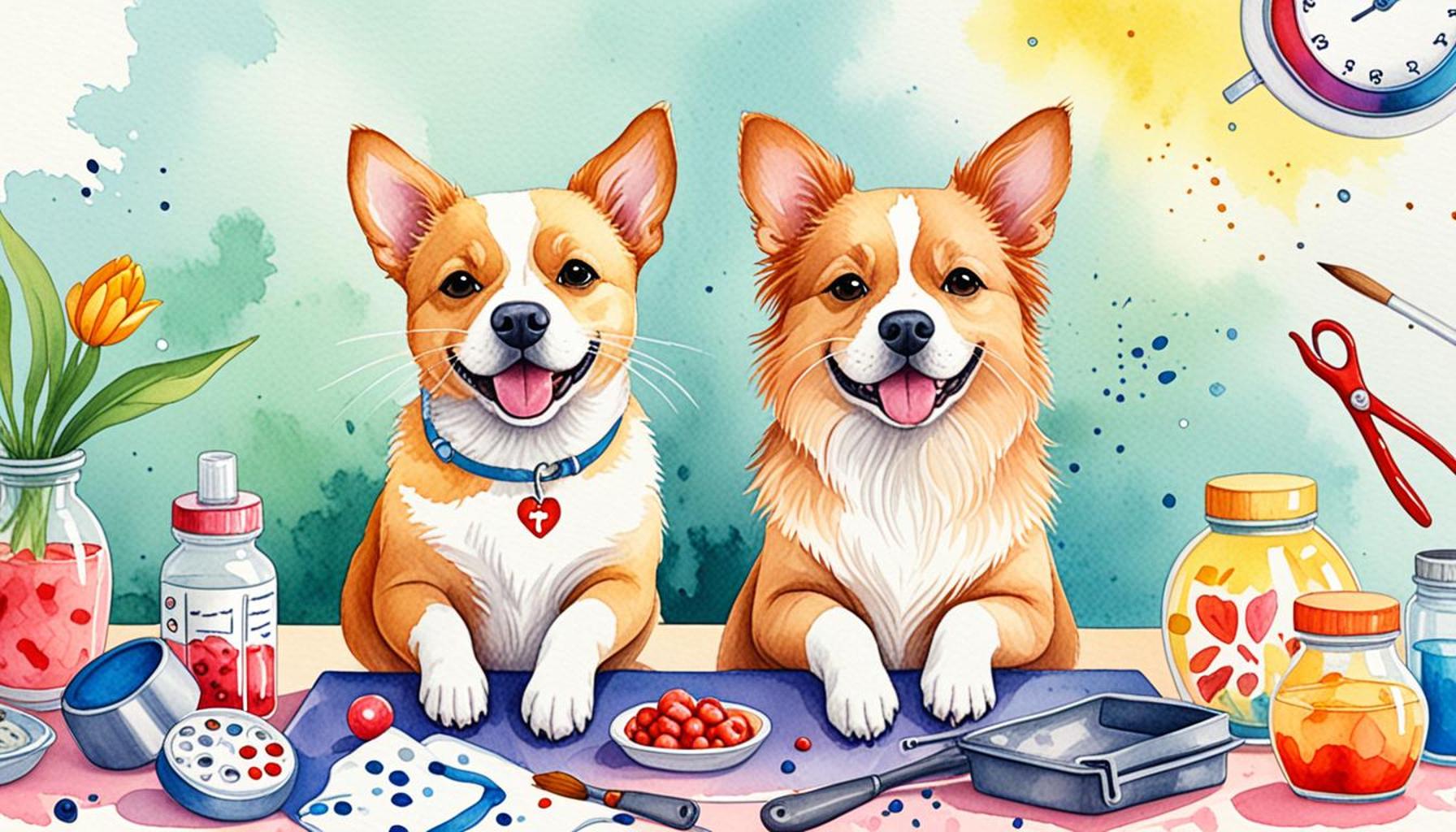Effective Strategies to Calm Dogs Afraid of Fireworks Noises

Understanding Dogs and Fireworks Fear
The Fourth of July is often a time of celebration, marked by barbecues, family gatherings, and dazzling firework displays. However, this festive time can pose significant challenges for dog owners, as many dogs experience intense fear and anxiety due to the loud sounds and bright lights associated with fireworks. Understanding the root of this fear is vital for helping our furry friends cope during these eventful nights.
Dogs have a heightened sense of hearing compared to humans, meaning that the booming sounds of fireworks can be overwhelming. This sensitivity often leads to visible signs of distress, which may be recognized through various behavioral cues. Common signs of fear in dogs include:
- Shaking or trembling: Dogs may shake uncontrollably as a bodily response to fear.
- Hiding or attempting to escape: Many dogs will try to find solace in small, enclosed spaces, such as under furniture or in a closet, often viewing these areas as safe havens.
- Excessive barking or whining: Vocal expressions of anxiety can be relentless, reflecting their discomfort with the environment.
Addressing fireworks-related anxiety is essential, not only to safeguard your dog’s well-being but also to maintain a peaceful atmosphere at home during celebrations. Successful strategies for alleviating this fear can make a significant difference in your dog’s comfort level.
There are several effective techniques available to support dogs during firework displays. By employing a combination of innovative interventions, pet owners can create an environment that minimizes anxiety. Here are some approaches worth exploring:

- Safe spaces: Designate a quiet area in your home where your dog can retreat during fireworks. This could be a room with thick curtains to muffle sounds and a cozy blanket to offer comfort. Consider placing some of their favorite toys in this area to make it more appealing.
- Sound desensitization: Gradually exposing your dog to recorded firework sounds at a low volume can help them become accustomed to the noise. Increase the volume slowly over time, ensuring to reward calm behavior with treats and praise during the process.
- Calming products: Various products on the market, such as anxiety wraps, pheromone diffusers, and natural supplements, can help create a calming effect. Some dog owners have found success with CBD treats aimed at reducing anxiety.
By integrating these strategies into your approach, you not only prepare your dog for the noise of upcoming celebrations but also bolster their overall emotional resilience for future stressful experiences. Taking these necessary steps ensures that your pet remains a happy and relaxed member of your family during what should be a joyful occasion. Whether through training, environmental adjustments, or supportive products, finding the right combination to suit your dog’s unique needs can lead to a more serene holiday experience for both you and your furry companion.
CHECK OUT: Click here to explore more
Strategies to Create a Calming Environment
When confronted with the cacophony of fireworks, creating a calming environment is paramount for your dog’s peace of mind. Since dogs can experience anxiety not just from the noise itself but from the associated visuals and vibrations, it’s crucial to implement multi-faceted strategies that address all aspects of their discomfort. Here are some effective methods to help your dog feel more secure during those noisy celebrations:
- Background Noise: Introducing soothing background noises can help mask the sounds of fireworks. Fans, soft music, or white noise machines can create a comforting auditory backdrop that can distract your dog from the fireworks outside.
- Comfortable Bedding: Make sure your dog has a cozy, familiar spot to rest. A favorite bed or blanket that smells like you can bring a sense of safety and familiarity, helping to alleviate anxiety. This space should be in a quiet part of the house where the firework sounds are the least intrusive.
- Routine Maintenance: Keeping a consistent routine leading up to the holiday can serve as a stabilizing factor for your dog. This includes regular feeding, walks, and playtime, as a well-structured routine can provide comfort and normalcy, even during stressful events.
Moreover, considering your dog’s unique personality and past experiences with fireworks is vital in determining the most effective approach. While some dogs may seek company during tense moments, others may prefer solitude. Engaging in deep observation can offer insights into your dog’s immediate needs. For instance, if your dog tends to gravitate towards certain spaces or objects when anxious, utilize those preferences to create a tailored stress-relief plan.
Additionally, positive reinforcement training can be incredibly effective. Associating the sound of fireworks with positive experiences, like treats or playtime, can help shift your dog’s perception of the noise from a source of fear to one of relief. This process takes time and patience but can ultimately equip your dog to enjoy the summer festivities without distress.
With the right blend of environmental adjustments and behavior strategies, you can significantly reduce your dog’s fear of fireworks. Remember, the key is to implement these strategies well in advance of the season. The earlier you can help your pet adapt, the better equipped they will be to handle the noise and excitement when the fireworks light up the night sky. Ultimately, investing the time and thoughtful care not only enhances your dog’s well-being but also fortifies the bond you share, ensuring that both you and your furry companion can enjoy the holiday in peace.
| Calming Method | Description |
|---|---|
| Desensitization | Gradually expose your dog to firework sounds at a lower volume, helping them adjust to the noise. |
| Safe Space | Create a cozy and secure area in your home where they can feel safe during firework events. |
| Calming Products | Explore calming sprays, pheromone diffusers, or anxiety wraps that can help soothe nervous pets. |
| Distraction Techniques | Engage your dog with toys, games, or treats to keep their mind off the noise outside. |
The techniques outlined above not only address the immediate concerns of noise anxiety but also foster a deeper bond between you and your furry friend. Methods like desensitization lend themselves to a gradual exposure strategy that respects your dog’s emotional needs. Establishing a “safe space” creates an environment where they can retreat when distressed, diminishing their fears.Moreover, the utilization of specialized products designed for anxiety, such as calming sprays or pheromone diffusers, has gained traction among pet owners. They contain naturally calming ingredients or mimic the comforting scents that dogs love. Meanwhile, engaging your pet with distraction strategies can redirect their attention during stressful situations, providing immediate relief. Implementing these strategies not only supports your dog’s emotional health but may also lead to improved behaviors during fireworks or other distressing events.
SEE ALSO: Click here to read another article
Utilizing Calming Products and Techniques
In addition to creating a peaceful environment for your dog during fireworks, leveraging calming products can also play a significant role in alleviating their anxiety. With a myriad of options available, it’s essential to identify which products suit your dog’s particular needs and preferences. Let’s explore some of the most popular calming solutions that can assist in mitigating your dog’s fear during these loud festivities:
- Thundershirts and Anxiety Wraps: These specially designed garments apply gentle pressure to your dog’s body, promoting a sense of security much like a hug. Thundershirts have garnered positive feedback from dog owners and trainers, offering a non-pharmaceutical option to reduce anxiety. They are particularly effective for dogs that have general noise-related fears.
- Calming Chews and Treats: Numerous brands offer treats containing natural calming ingredients such as chamomile, valerian root, or CBD oil. Research suggests that certain formulations can help lessen anxiety in dogs. Always consult with your veterinarian before introducing new supplements to your dog’s diet to ensure safety and proper dosage.
- Diffusers and Sprays: Essential oils such as lavender and chamomile are known for their calming effects. Diffusers that disperse a calming scent can help soothe your dog’s nerves. Additionally, calming sprays that mimic the natural pheromones of a mother dog can create a sense of comfort for anxious pups.
Another effective approach to consider is the use of desensitization techniques. This method involves gradually exposing your dog to the sound of fireworks at a low volume while providing treats and positive reinforcement to create a stress-free association. Begin this training well in advance of fireworks to help your dog build confidence and resilience towards the noise.
Further, some dog owners have found success with behavioral training techniques that incorporate distractions during the fireworks. Engaging your dog in an interactive puzzle toy or game can shift their focus away from the sounds outside. Keeping their mind occupied not only diverts their attention but also stimulates them mentally, reducing anxiety levels.
Moreover, seeking additional support from a professional animal behaviorist can enhance your strategies. This is particularly beneficial for dogs with severe phobias, as a behaviorist can offer tailored action plans and modifications based on your dog’s characteristics and triggers. Remember, dogs are individuals with their unique personalities; what calms one dog may not work for another.
Incorporating these calming products and techniques into your dog’s routine can foster a greater sense of tranquility during fireworks season. Moreover, it’s vital to start implementing these strategies ahead of time—ideally weeks before events—to allow your furry friend the opportunity to acclimatize.
Ultimately, the goal is to make fireworks a less daunting experience for your dog. By adopting these effective strategies, you can significantly decrease your dog’s anxiety and create a more enjoyable environment not just for them, but for yourself and your family during those vibrant summer celebrations.
SEE ALSO: Click here to read another article
Conclusion
In summary, managing a dog’s fear of fireworks is a multifaceted approach that requires understanding, patience, and timely interventions. By employing a combination of calming products—such as Thundershirts, calming chews, and natural sprays—you can provide your furry companion with the comfort they desperately seek during those loud bursts of sound. Additionally, desensitization techniques and behavioral training can empower your dog to face their fears, turning anxiety into acceptance over time.
As pet owners, it’s crucial to recognize that every dog is unique; what works for one may not be effective for another. Therefore, observing your dog’s responses and adapting your strategies accordingly is key to creating a safe and peaceful environment. Engaging with a professional animal behaviorist can also provide valuable insights and customized plans tailored to your dog’s specific needs, especially for those with severe phobias.
With the fireworks season right around the corner, proactive measures taken now—such as introducing calming techniques and products—can make a world of difference. By prioritizing your dog’s mental well-being and starting early, you can transform a potentially traumatic experience into one that is manageable and less stressful. Ultimately, your commitment to understanding and assisting your dog through their fears can lead to a more harmonious experience for both you and your beloved pet, allowing everyone to celebrate the festivities in peace and joy.



